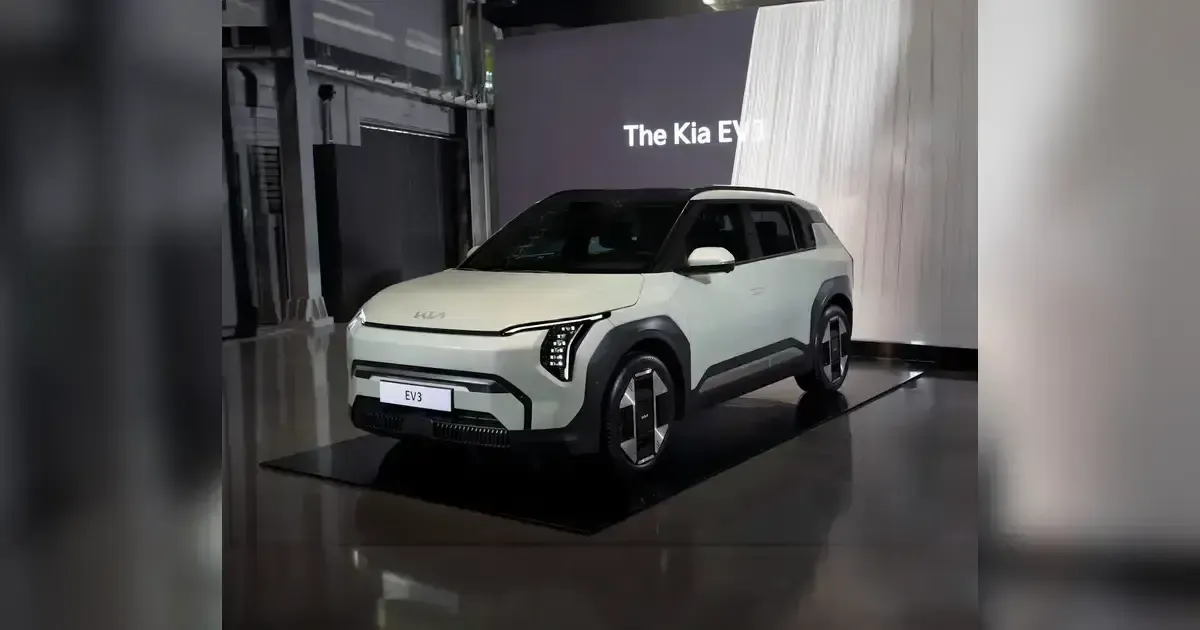Find out everything you need to know about the 2026 Kia EV3.
A budget-friendly electric vehicle with a respectable driving distance is always close by. Chevrolet once had the Bolt, then it disappeared, but will it make a return in the future? Meanwhile, we continue to witness the introduction of increasingly larger electric vehicles, which are becoming more difficult to handle, equipped with battery packs powerful enough to supply electricity to entire city blocks.
Even though we know that the main objective of business is to generate enormous profits and profits are higher at higher prices, it seems like people searching for inexpensive electric motivation are not getting a fair deal. Korea is aiming to defy that pattern with the upcoming 2026 Kia EV3.
The small electric SUV provides the same high-quality features as the automaker's bigger vehicles, along with some improvements that we anticipate will be introduced to the entire range eventually. It provides a relatively large battery given its compact size, along with a price range aimed at $35,000 to $50,000.
This electric vehicle affordability is becoming more accessible, despite the fact that this small vehicle won't be available in the United States until 2026. However, is it of good quality?
About the 2026 Kia EV3
Numerous small electric vehicles are limited by small batteries and range numbers that do not align with how Americans typically use their vehicles. The EV3, on the other hand, houses a sturdy 81.4-kWh battery underneath its chassis, slightly smaller than the Niro it will eventually be available with. Although it is rated for over 370 miles, this is based on the WLTP cycle, which tends to be generous. In the United States, we predict the EV3 will have a range close to 300 miles.
A 58.3-kWh battery is also an option, although it remains uncertain if both will be made accessible in the U.S. Unlike the Hyundai Ioniq 5 and other larger models that utilize an 800-volt architecture, the EV3 is equipped with a 400-volt setup. Don't worry too much about longer charging times - Kia predicts a 31-minute charge from 10% to 80% on a 350-kW charger, but keep in mind the EV3's fastest DC fast-charge rate is 130 kilowatts.
In the future, the EV3 range will expand to feature four-wheel drive and a more powerful GT version. However, initially, the EV3 will be available in the U.S. with a single-motor, front-wheel-drive setup, generating 201 horsepower and 209 pound-feet of torque (subject to change before its U.S. release).
This should propel this small vehicle to a speed of 62 mph in approximately 7.5 seconds. Kia predicts that the forthcoming AWD model will take less than seven seconds to complete the task, while the GT will finish it in under six. There are currently no power ratings available for either of those models.
Improved Technology
Kia could have removed features from the EV3 in order to keep costs low. Instead, it has some technological enhancements that we anticipate will be implemented in all of the brand's electric vehicle range in the near future. Up first is the pedal 3.0, the newest edition of Kia's multi-stage regenerative braking technology.
This new arrangement separates one-pedal driving and maximum regen power, enabling drivers to mix one-pedal mode with any regen intensity desired, even when going backward. This is connected to Kia's Smart Regenerative System 3.0, which utilizes GPS and the car's sensors to modify regen power based on traffic or road characteristics such as speed bumps and roundabouts.
Enabling this option is simple; just press the right steering wheel paddle for about one second. A guide at the driving range will indicate to the pilot the anticipated maximum and minimum range considering their driving habits, for those seeking advice on improving their driving skills. The EV3 also receives some additional, minor adjustments.
Improved heat control offers improved charging performance in low temperatures, which is a significant concern for us at C/D because our long-term EVs frequently experience very slow charging speeds during harsh Michigan winters. The HVAC system has been redesigned to be more compact, resulting in an additional 2.4 inches of footwell space and creating a more spacious cabin in the compact car, as per Kia.
Operating the EV3 vehicle
Seoul may not be the top choice for testing vehicles, but we believe it was a suitable decision in this case. The EV3 is not designed for racing around corners; it's a straightforward electric vehicle made for small families and city dwellers. Seoul's famous traffic and extensive highways serve as an appropriate comparison for where the majority of these vehicles will be for the majority of the time.
Keeping that in consideration, we left feeling enthusiastic about the potential of the EV3. The GT-Line we tested came equipped with 19-inch wheels, which are two inches bigger than the standard alloys, but we still experienced a smooth ride. Body movements were controlled, and even though the ride had a natural smoothness, it never felt unsteady. We envision that the atmosphere would be even calmer on the 17th.
Each of the different wheel options also seemed impressive; other car manufacturers should be paying attention. This compact EV9 has sufficient power for its purpose. We always had plenty of acceleration, and it was actually nice to drive an electric vehicle that wasn't focused on speed. This is a reasonable level of driving force, suitable for individuals with limited familiarity or interest.
We didn't really like the Smart Regenerative System, as we prefer a more predictable linear response. Nevertheless, individuals seeking such features should appreciate it, as we discovered a superb balance between friction and regenerative braking. Separating maximum regeneration power from one-pedal driving was a clever decision that introduced a bit of customization for drivers without sacrificing the overall experience, and we anticipate this feature will be incorporated into more models in the near future.
The interior of the EV3 is also quite impressive. The passengers in the back have their own USB-C charging ports in the front seatbacks, preventing cables and phones from becoming trip hazards.
Conclusion
It can be difficult to gather impressions from a drive so far ahead of a car's release, but all indications suggest it will debut in 2026. However, given our initial experiences, we are confident that the EV3 will fit seamlessly into the U.S. lineup. Although the potential for cheaper electric vehicles has not been realized, assistance is on its way for those seeking an EV that is not a large SUV.


























